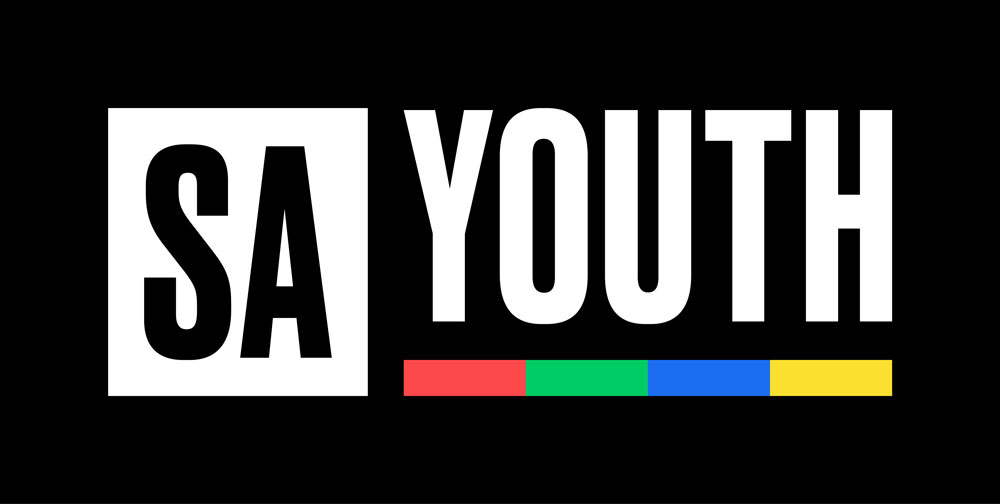

SA Youth connects young people to work and employers to a pool of entry level talent.
Are you a work-seeker?
May 2019
Employers regularly say they can’t find the people they need because of a lack of skills and educational qualifications. The response to this is often long (and expensive) training programmes focused on skills and qualifications.
But it’s not just about skills.
For many entry-level jobs, information about where and how to look for jobs can sometimes matter even more than skills. Harambee’s learnings from a network of nearly 600,000 work-seekers has shown the importance of understanding ‘signals’ as much as we understand skills.
A ‘signal’ is a way of communicating credible information in the labour market – for example, an unemployed youth with a branded CV tells an employer something about their capabilities, if the employer trusts the brand on the CV. ‘Signalling’ studies have been part of an active research agenda of many institutions building a community of practice on youth unemployment – one that focuses on producing actionable insights and a stronger evidence base for what is working and what more is needed.
This edition of Breaking Barriers shares early insights from a pathbreaking randomised control trial (RCT) study completed with Harambee, Oxford University, Duke University, Stellenbosch University and the World Bank. The study investigates the impacts of providing an unemployed person with a ‘signal’ about their attributes and measures its impact on their ability to find work.
Brought to you in partnership with:
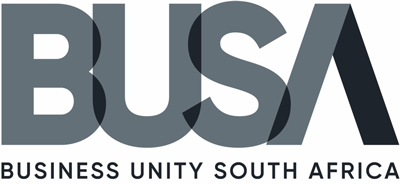

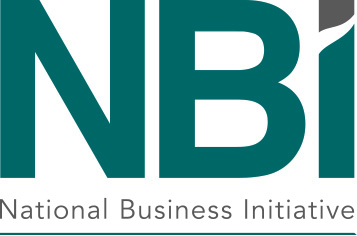
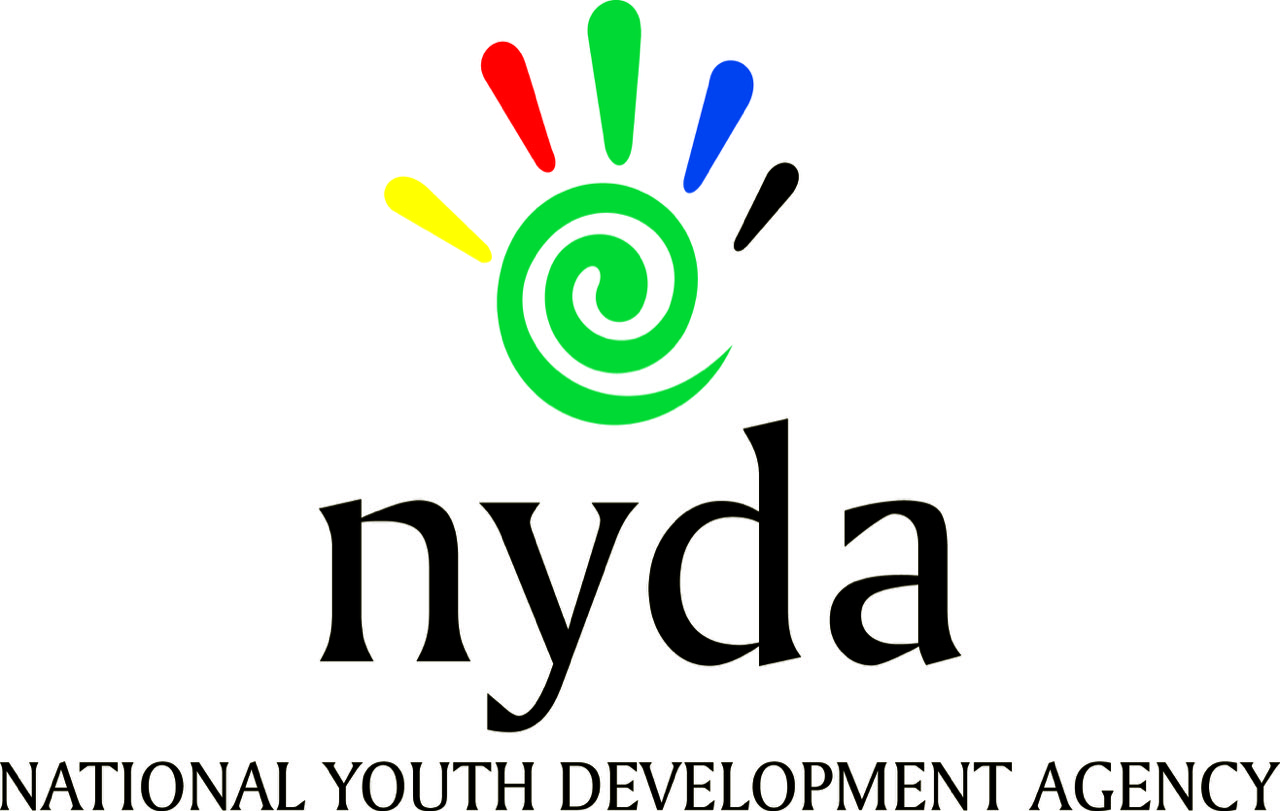
As measured by Statistics South Africa’s Quarterly Labour Force Survey (QLFS), the youth (18 – 34-year olds) employment rate for 2019Q1 currently stands at 48,7%.
National employment rates for youth are now below 50%, which as represented on the graph, are the lowest they have been in a 5-year period.
Traditionally, January to March is the quarter with the lowest employment rate due to the ending of seasonal and temporary employment especially in the services sector over the holiday season.
However, for this quarter, the percentage point fall between 2018Q4 and 2019Q1 is bigger than previous years. Harambee data showed this fall too and suggests that these rates are expected to decline in 2019Q2.
Harambee Youth Employment Accelerator remains committed to engaging government, employers and work seekers in collaborative efforts to change the youth employment landscape in South Africa.
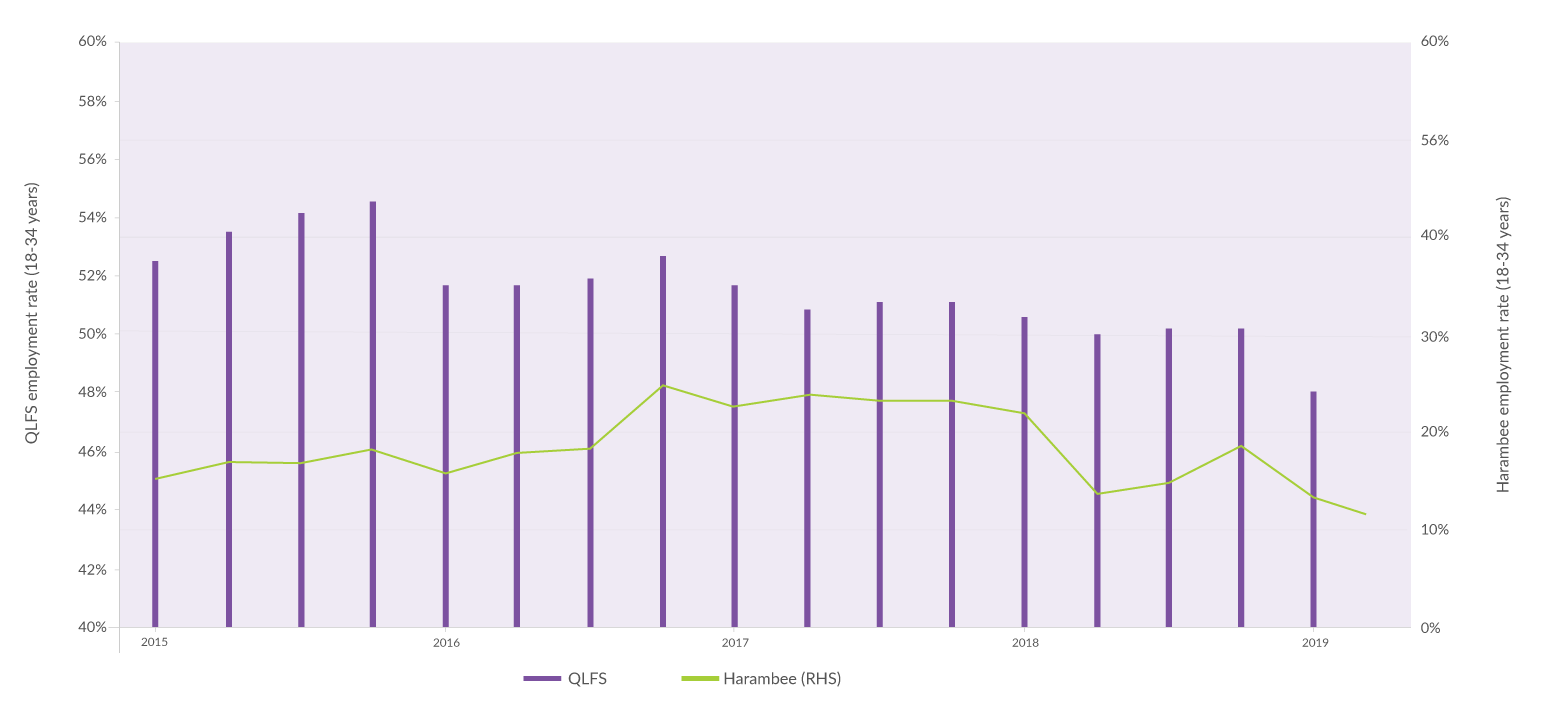
*The Harambee employment rate is measured up to 30 April 2019. Data is not drawn from Stats SA data but reflects a sample of youth who are typically living in grant dependent households.
**Youth includes all 18 – 34-year olds
***Note: Harambee’s employment rate is lower, because representatively our sample has traditionally focused on urban youth and more formal opportunities. However our model data collected is shifting to account for the high mobility of youth in and out of urban areas, as well as the changing nature of work.
INSIGHT 1
Early findings from the study show that when work-seekers are given
a summary report to share with potential employers, their likelihood
of finding work increases by up to 17% and their earnings by up
to 32% compared to a group who didn’t receive the report.
Figure 1: Work-seekers with the report have an advantage over work-seekers without this ‘signal’
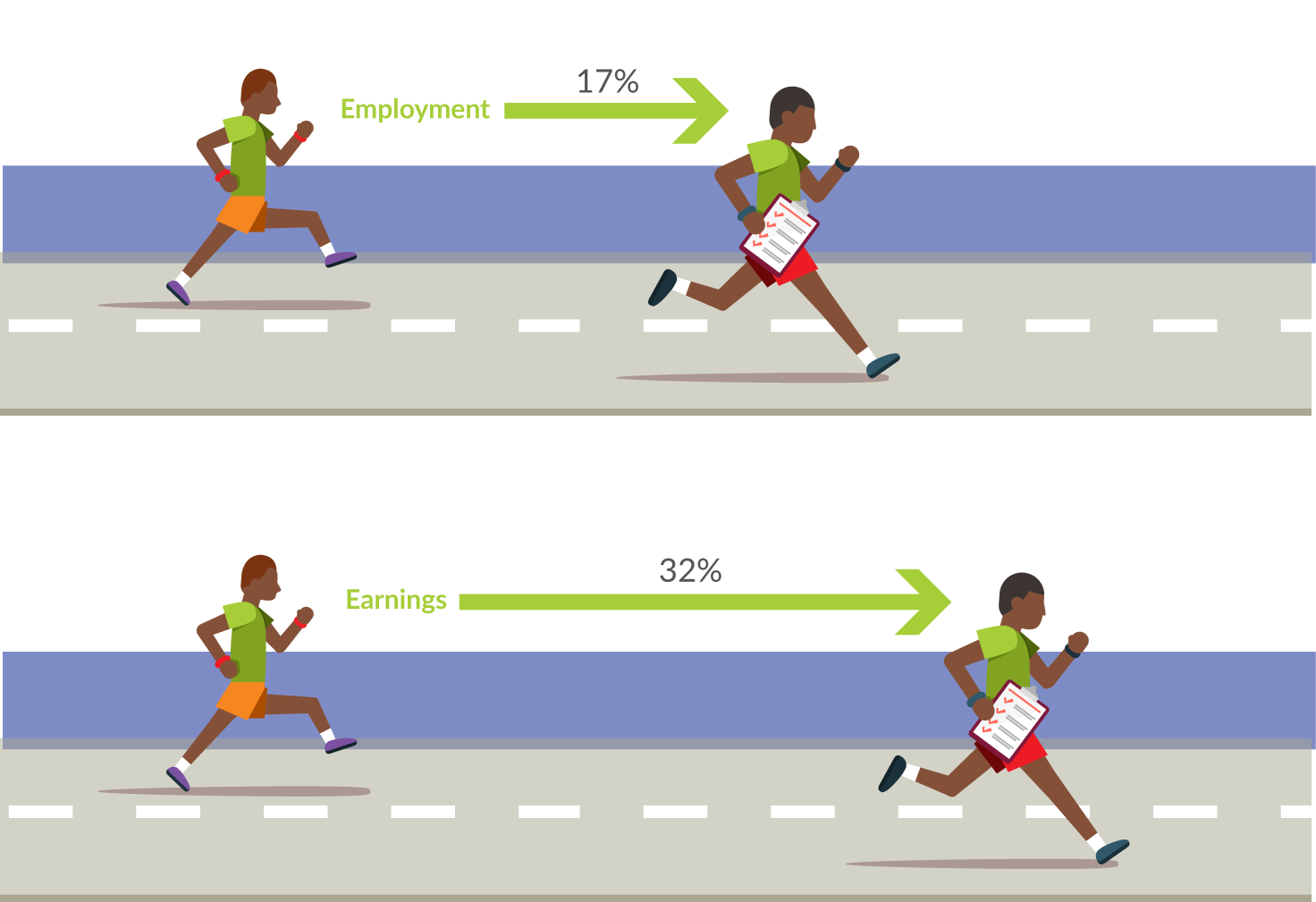
Source: Image: Harambee Youth Employment Accelerator (2019) Data: Harambee Youth Employment Accelerator, Duke University, Oxford University, Stellenbosch University and World Bank (2019), publication pending
INSIGHT 2
The study also explores which ‘signals’ employers value the most.
Communication abilities were found to be the most predictive for
employment and earnings. Grit and resilience were also valued.
Figure 2: Employers value communication, grit and resilience highly

Source: Source: Image: Harambee Youth Employment Accelerator (2019) Data: Harambee Youth Employment Accelerator, Duke University, Oxford University, Stellenbosch University and World Bank (2019), publication pending
INSIGHT 3
Harambee’s Employability MapTM identifies expanded dimensions of employability that matter for making the right match – including behaviours and socialisation for work as well as skills. At Harambee we believe, based on the data we have collected from young people and employers, that there are many attributes that matter for employability. The study tested certain aspects of functional competencies and highlighted the importance of other attributes as well.
Figure 3: Harambee Employability Map™
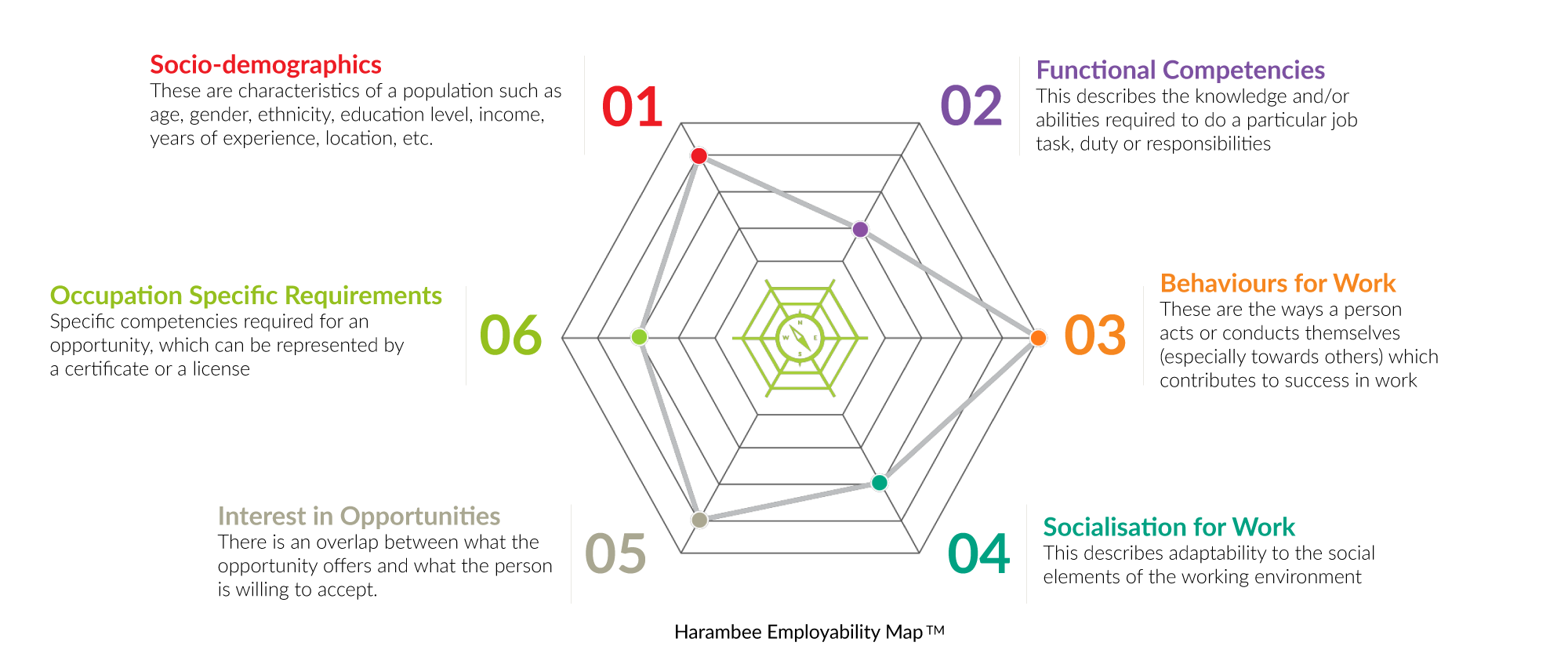
Source: Source: Harambee Youth Employment Accelerator (2019)
Stay tuned for the further study results to be shared later this year!